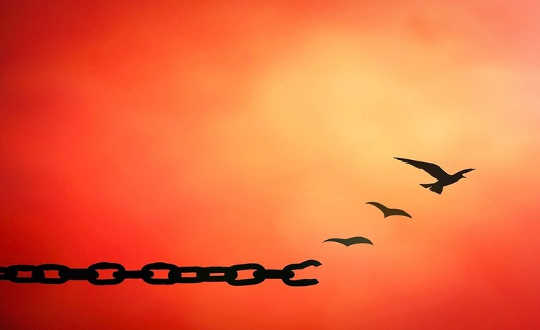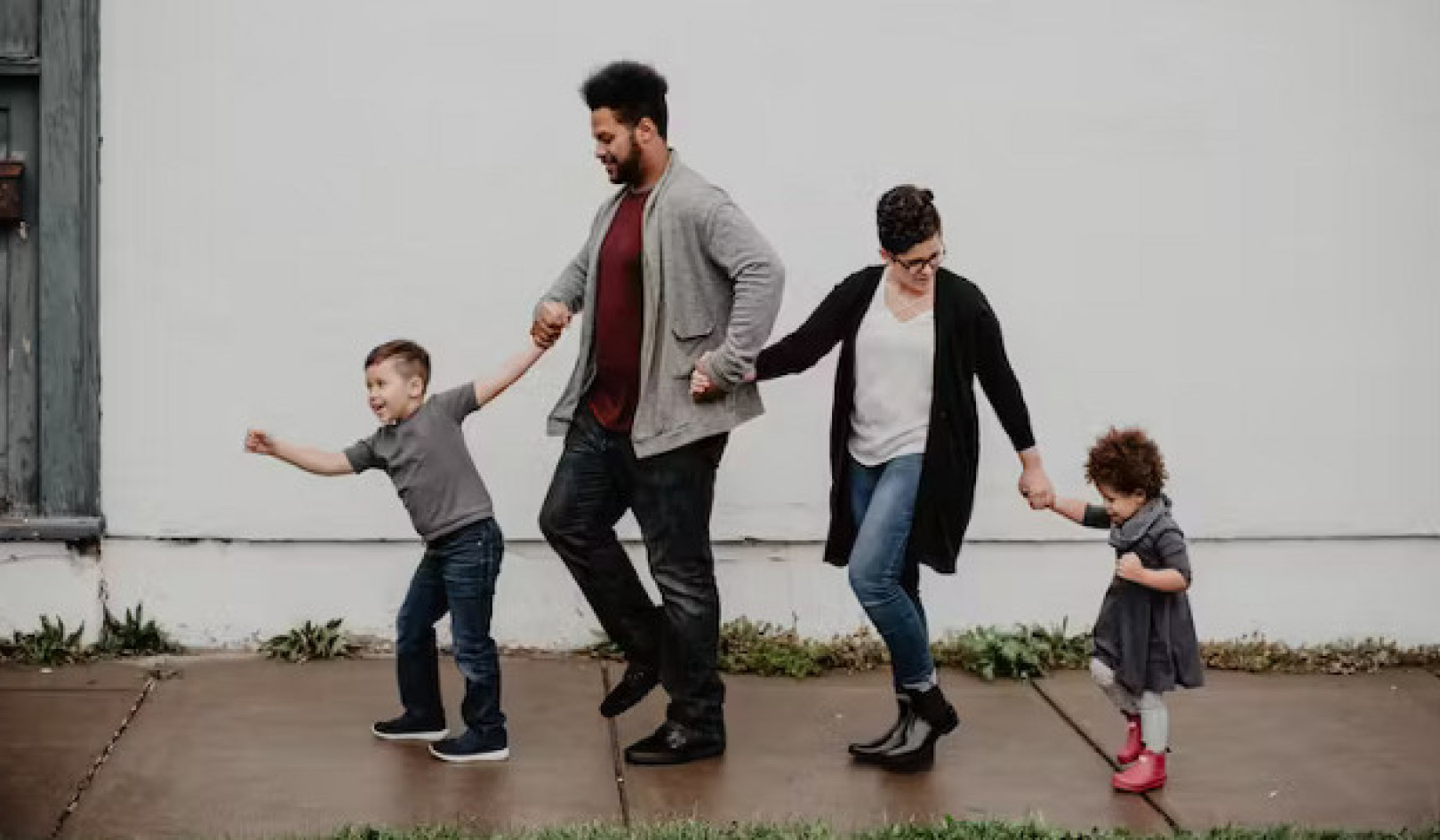
In one of her video lectures, Carolyn Myss reminds each John or Jane Doe in her audience that just as he/she is working on the process of forgiving other people, any one of those "other people" may be sitting in workshops, writing in journals, or consulting with a therapist, in that very moment, in order to forgive John or Jane Doe.
Indeed it is excruciating, sometimes impossible, to imagine that the same devastation we experience as a result of the offenses directed toward us, we may have helped create in the life of another human being. We may shudder and recoil at the thought -- an idea that is likely to catapult us headlong into relentless scapegoating and self-justification. "I wouldn't do that to a snake," one snarls, and yet, the terrible truth is that one's treatment of snakes, and other blatantly slimy creatures, may be far more benevolent than the manner in which one has treated some human beings.
Our "Sins of Omission"
What is equally true is that a painstakingly candid investigation of our past invariably reveals offenses of omission, as well as unkind acts committed aggressively against our fellow creatures. Almost without exception, our "sins of omission" result from a state of denial or unconsciousness. This is particularly true in situations in which a spouse, in the name of preserving the family intact or being a dutiful wife or husband, permits her/his children to be abused. In some cases, usually as a result of the abuse that parent experienced as a child, she/he virtually "hands the child over," albeit unconsciously, to the perpetrator to be beaten, molested, or verbally humiliated.
If upon examination of one's life, one discovers this kind of culpability, particularly in situations where the events of omission are now years or decades in the past and are, therefore, irreversible, how does one break through the encrustations of denial and self-justification to resolution and serenity?
A Searching and Fearless Moral Inventory
One of the stellar contributions, in my opinion, of the Twelve Steps of Alcoholics Anonymous and other recovery groups using the Steps, is the "searching and fearless moral inventory" of Step Four. In the recovery process, the completion of Step Four is a disturbing milestone that is necessary in order that the healing process may come to fruition. Even in Twelve Step programs which focus on recovery from abuse, the completion of a Fourth Step is highly recommended.
The purpose of the inventory is not to indulge in self-deprecation or to vindicate offenders, but rather to assume accountability for one's part in the devastations of one's human experience, thereby facilitating an authentic appreciation for the myth that is one's individual life in relation to the other characters of the story.
The Journey of Forgiveness
I believe that it is not only useful, but essential, for anyone engaged in the journey of forgiveness to complete a moral inventory, examining her/his part in the offenses which she/he desires to forgive. Even more valuable is an inventory of one's entire life, examining one's participation in the offending behavior from the age when one is first capable of making choices, to the present.
Although such an inventory is a long, arduous, and challenging process, it is invaluable in clarifying one's accountability which ultimately liberates and heals one from the need to defend against guilt. What could be more emancipating than the ability to stand tall in the face of one's offenses and boldly proclaim: "This is my part. I am not proud of it, but neither do I shame myself because of it. It was a natural and inevitable consequence of my upbringing, but in this moment, I see with new eyes the devastation I co-created, and I refuse to ever participate in this behavior again."
The Challenge Of Accountability
Moral inventories and self-forgiveness do not erase consequences. They do, however, provide perspective, and ultimately, the peace of surrender to one's current powerlessness over the past. No longer must one shore up psychic energy to defend one's position or repress from consciousness excruciating realizations.
Like an alchemical container, the inventory holds both the horrors of the past and the dynamics that created them, allowing one to burn for a time in the fires of remorse, and then to hold in one's own awareness the opposites that seem hell-bent on dismembering one's soul and body.
Jung reminds us repeatedly that throughout our human experience, we are responsible both for our conscious and unconscious psychic material. Every individual has a dark side, and while one may be aware of its magnitude and horror, everyone also has a shadow of which he/she is not aware.
Jung defined the shadow as any part of ourselves that we disown and that remains unconscious, including aspects of oneself that may be socially acceptable. Our true nemesis then, is not the dark side, but the shadow, for the very fact that, unlike the dark side, the shadow is not available to our conscious awareness.
A moral inventory may reveal a great deal regarding one's dark side, but it is not likely, nor is it intended to reveal, the contents of the shadow. Yet confronting one's shadow is an integral piece of the forgiveness journey.
Exploring One's Shadow
Until one has explored one's shadow, one will invariably perceive certain qualities of an offender as deplorable. While those characteristics may indeed be abhorrent, it is equally true that somewhere in one's own shadow reside similar attributes of which one has no conscious awareness.
Without access to such material, it is inevitable, indeed necessary, that one will polarize oneself in relation to the offender -- a perspective that renders any exploration of forgiveness virtually impossible. Only when one is capable of viewing the despicable characteristics of an offender then asking oneself "Where do similar qualities reside in me?" that one is can make significant strides in the journey of forgiveness.
I hasten to add that I do appreciate how inconceivable this may be in the beginning of a moral inventory. With certain offenses, the answer to this question may come more readily than with other offenses. For example, many clients have told me that they can effortlessly access the "murderer" within themselves, but that it is virtually impossible to access the "child molester."
For some individuals, there may be no "child molester" in the shadow, but for those who have survived the horrors of child sexual abuse, given a child's lack of boundaries and ego defenses to prevent incorporation of the psychic energy of the abuser, it is unlikely that a survivor has no "child molester" in his/her shadow.
The principle reason for multi-generational repetition of sexual abuse, according to Jung, is the shadow "child molester" inhabiting the psyche of every survivor of sexual abuse. While external re-enactment of the pattern is not a foregone conclusion, it remains a distinct possibility, unless and until the survivor has thoroughly confronted the wounds of her/his sexual abuse. Moreover, internal re-enactment becomes a lifelong issue because the abused survivor, as a result of incorporating the psychic energy of the offender(s), will always tend, on some level, to abuse and re-abuse her/himself.
Only when the survivor of sexual abuse can explore her/his shadow sufficiently to discover and heal the internal "child molester" can she/he avoid both internal and external re-enactment of the abuse, and only then can that individual endure the adversity of the journey of forgiveness.
Compassion is a Prerequisite to Forgiveness
Examination of shadow material inevitably enhances the compassion for oneself and for an offender that are essential pre-requisites for allowing forgiveness to unfold in any context and in relation to any issue. Thus, it is an axiom of the forgiveness journey that if I continue to disown the hurtful behavior of the offender as "not me" or "something I would never do," I persist in making the journey of forgiveness impossible to fullfil, let alone even begin.
For this reason, few individuals embark on or continue the process of forgiveness which is hardly surprising given the enormity of the genuinely daunting task of owning qualities in one's inner world that reside in and have been expressed by an offender. No wonder, then, that we hear such lack of depth from awareness experts regarding the painstaking intricacies and precarious ramifications of the easily-spoken, but laboriously-lived word: forgiveness.
The intention of my insistence on viewing the infinite depths and convolutions of the forgiveness process is not to discourage or overwhelm. I wish not only to forewarn and fortify those who desire to embark on the journey, but hopefully, to enrich the experience of forgiveness by cultivating an exuberant appreciation of its rich textures and radiant rewards -- nothing less, I pray, than a sense of awe that one is capable of forgiveness and full participation in its glorious mysteries, so that, in the words of the poet, Wendell Berry:
Then what I am afraid of comes.
I live for a while in its sight.
What I fear in it leaves it,
and the fear of it leaves me.
It sings, and I hear its song.
Exercise: A Moral Inventory
This is a lengthy exercise and should be started and completed over a period of time -- days, weeks, months, but it should be completed. In a large notebook with ample pages, begin writing about all people and situations of which you are aware which offended, hurt, or intimidated you from the moment of your conception to the present time.
It is not important that you actually remember these events. You can rely on stories told to you by others and on your own intuition regarding the events of your life. It may be useful to designate one or two pages for each person or event which harmed you.
In relation to each person, write in detail how they harmed you. What did they do or say that offended you?
After you have thoroughly described the offense, then explain YOUR PART in the offense. "Your part" does not necessarily mean your part at that time, but rather, how perhaps later in your life, you perpetuated your own harm by repeating the offense against yourself or others.
As your inventory moves along into your adult life, you will notice ways in which you had a part in the offense at the time it happened, as well as after. As much as possible, notice all aspects of your part each time you were offended.
Reprinted with permission of the publisher,
Authors Choice Press. ©2000. www.iuniverse.com
Article Source
The Journey of Forgiveness: Fulfilling The Healing Process
by Carolyn Baker, Ph.D.
 This book offers a compassionate yet courageous challenge to look deeply into the wounds inflicted, the emotional and spiritual effects of the wounds, and the psyche of the offender(s) in order to enter and complete what is nothing less than a daunting rite of passage. Offers supportive, no-nonsense exercises for embarking on a life-changing, transformative journey.
This book offers a compassionate yet courageous challenge to look deeply into the wounds inflicted, the emotional and spiritual effects of the wounds, and the psyche of the offender(s) in order to enter and complete what is nothing less than a daunting rite of passage. Offers supportive, no-nonsense exercises for embarking on a life-changing, transformative journey.
Info/Order this book. Also available as a Kindle edition
About the Author
 Carolyn Baker, Ph.D. is a storyteller, drummer, and educator living on the Mexican border of the Southwestern United States. She leads workshops and retreats on ritual and mythology of which she has been a lifelong student. She is author of RECLAIMING THE DARK FEMININE.. The Price of Desire as well as of The Journey of Forgiveness.
Carolyn Baker, Ph.D. is a storyteller, drummer, and educator living on the Mexican border of the Southwestern United States. She leads workshops and retreats on ritual and mythology of which she has been a lifelong student. She is author of RECLAIMING THE DARK FEMININE.. The Price of Desire as well as of The Journey of Forgiveness.























